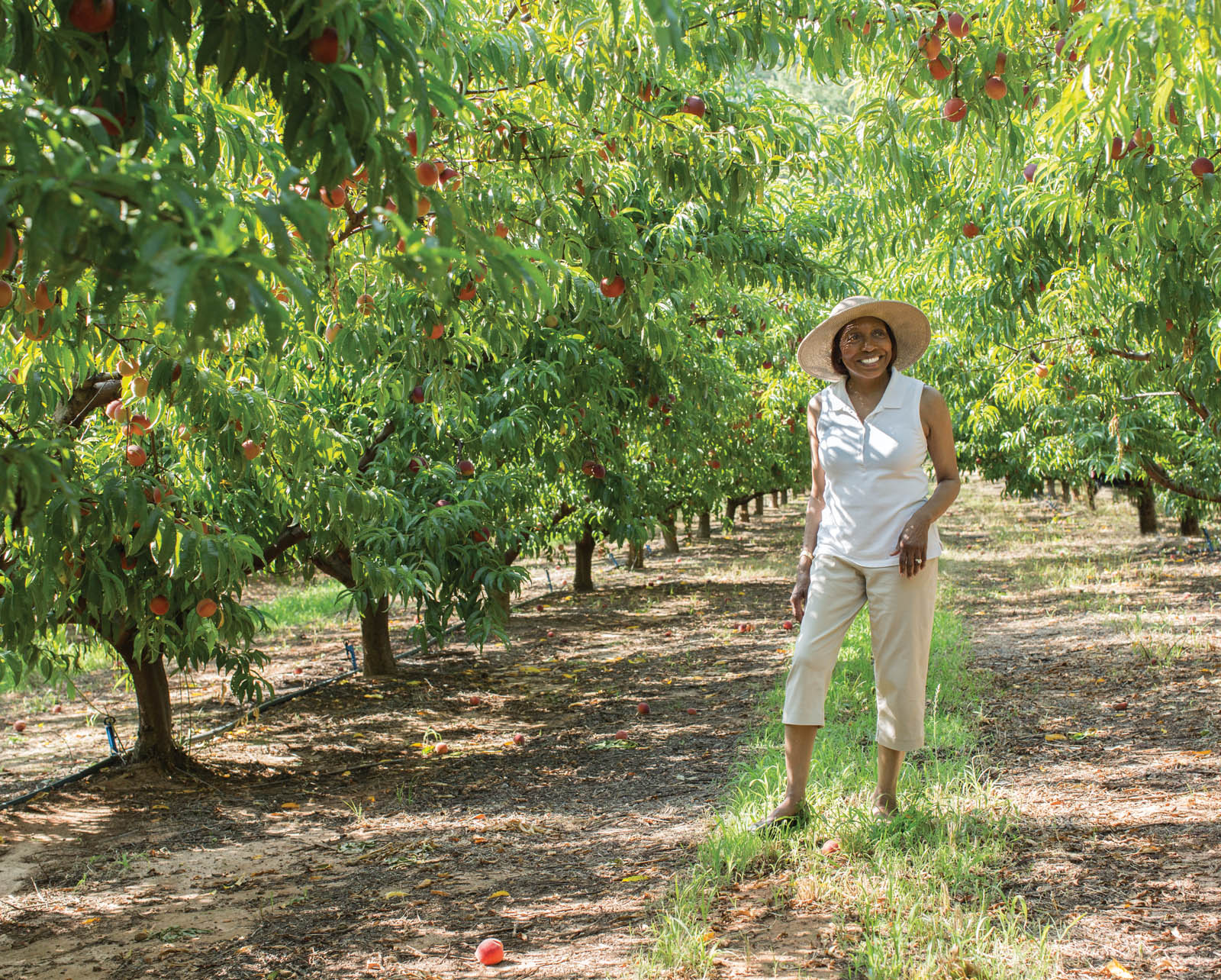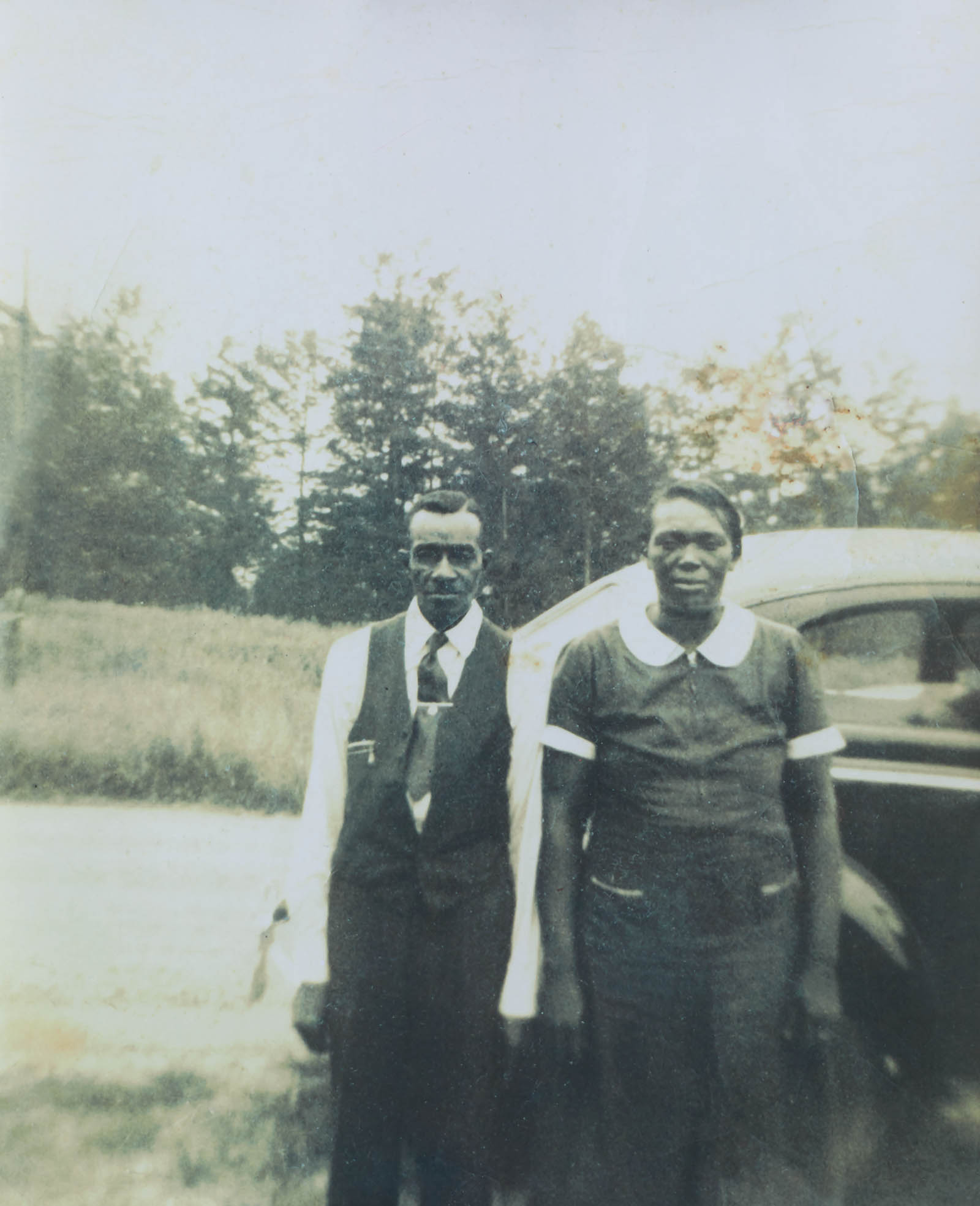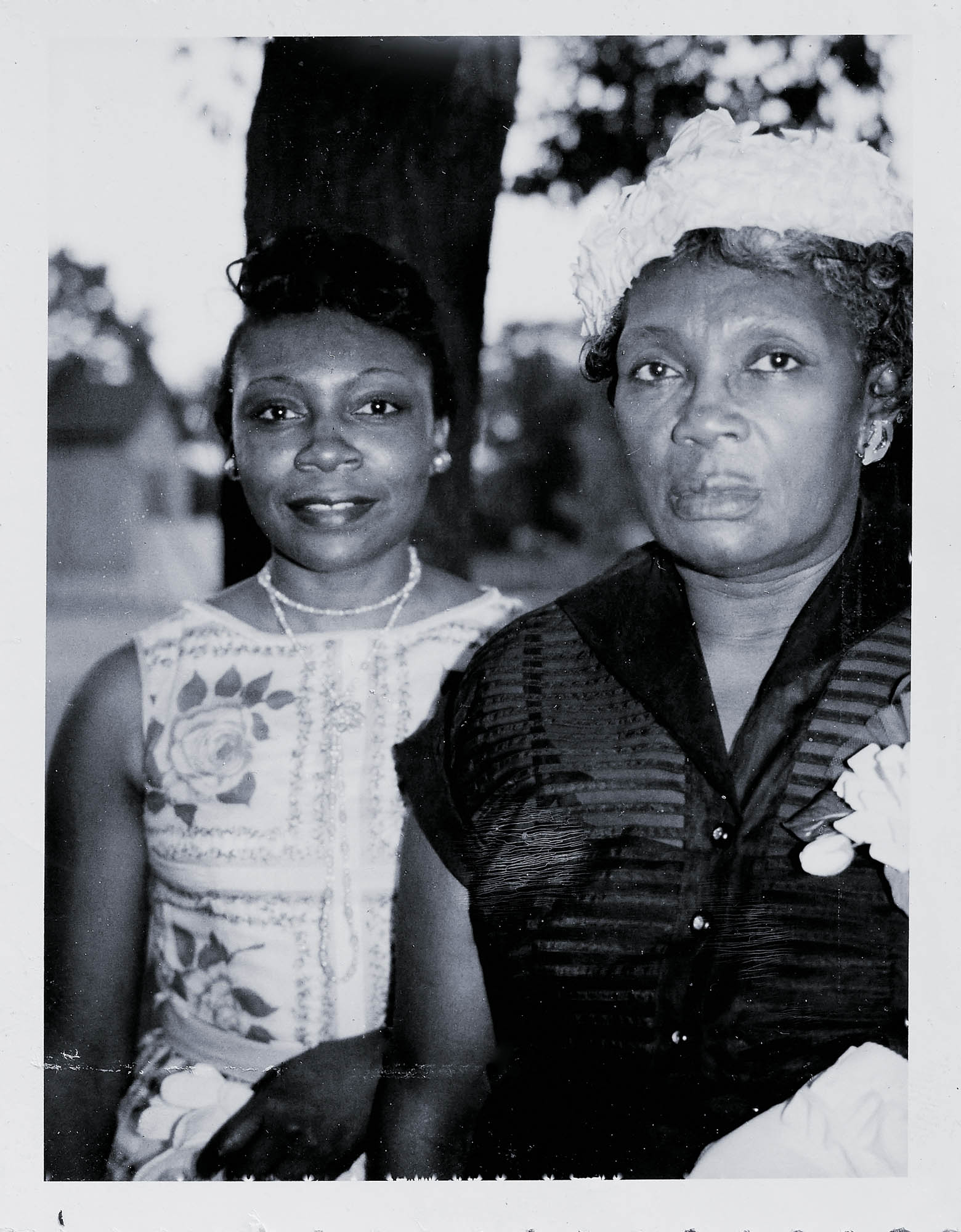“An apple is an excellent thing—until you have tried a peach.”—George du Maurier

My love for peaches goes way back.
I live in Edgefield County, South Carolina, the peach capital of the South. But I didn’t fall in love with peaches when I moved there. My love affair began much earlier. I spent all of my summers in Charleston, Mississippi, on my grandparents’ farm. My grandfather was a cotton sharecropper, like all of the other farmers around him. Since no one had much of anything, bartering was a way of life. If you had an abundance of sweet potatoes and needed tomatoes, you bartered with someone who had an abundance of tomatoes and needed sweet potatoes. That’s how it worked, and no one wanted for anything. Neighbors took care of neighbors, and our neighbors delivered bushels of peaches to our doorstep throughout the heat of summer.

My grandparents, John L. Batteast and Louise Moore Batteast
My grandmother, cousins, and I would spend hours on the front porch peeling and slicing peaches, getting them ready to be canned and made into preserves or peach brandy. I was then, and am now still, fascinated by the process. I never complained because, if memory serves me, I ate one peach for every two peaches I peeled. My grandmother always turned a blind eye. She was kind like that.
I learned how to cook in my grandmother’s modest Mississippi country kitchen, where there was only a wood-burning stove in the middle of the room and a small sink in the corner. There was no running water. Every morning, we kids would wake up at 5:30 a.m. to bring water in from the well and wood from the woodpile so that my grandmother could start preparing breakfast. She would stand in the kitchen, dressed and in her apron, her hands on her hips, waiting for her little helpers. With the water and wood delivered to the appropriate places in the kitchen, the boys were off to feed the animals, and Grandmother and I would start the meals of the day. It always amazed me how she cooked both breakfast and dinner at the same time. There would be biscuits and a cake or pie baking side-by-side in the oven, and pots filled with grits and collard greens on top of the stove. My first assignment was to set the table—an old wooden harvest table with mismatched chairs—and to set it with equally mismatched plates, glasses, and forks. The original shabby chic, born out of necessity. The hand-churned butter and homemade peach preserves sat in the middle, like stars of the breakfast table. All that was missing were the big, fat biscuits that would soon be coming out of the oven, which could be improved only with a smear of the sweet cream butter and peach preserves.

My mother Naomi Batteast Smith and Grandmother Louise Moore Batteast
The minute I arrived on the farm, I wanted to know if the peaches had come in yet. I was always just a bit early, leaving me impatient until the first round was ripe enough to pick. I was like a broken record that never stopped—my questioning just switched from, “Have they come in yet?” to “Are we getting more peaches today?” When my friends back home in Chicago asked me about my summers in Mississippi and what I did on the farm, my enthusiastic response every year was the same: “We canned peaches.” I’m vague on many of the other activities that took place on the farm during those summers, but the memory of the taste and the silky texture of those endless peaches never fades.
After my grandparents passed away, summers in Mississippi gave way to road trips to southern Michigan with my mother and aunts. There, we’d make a day at the pick-your-own peach orchards and drive back home to Chicago with a trunk brimming with peaches. When you’ve got that many peaches, there’s nothing to do but use them, and quickly. Just like in Mississippi, my mother and I would start the process of canning the fruit, peeling, chopping, and simmering to release the pectin. It would’ve made my grandmother proud.
After Mississippi, after Chicago, it didn’t matter where I lived. Whenever I came home to visit, I came home to a homemade peach pie from my mother. This tradition ended only with her passing. Nothing, absolutely nothing, evokes the memory of my mother or my grandmother more clearly than a peach pie still warm from the oven. While I have nearly perfected their recipes, I can tell you that mine never seem to taste quite like theirs, and I suspect that they never will.
Since those long-ago summers on the farm with my grandparents, I have spent much of my adult life experimenting with peaches, and my world has expanded well beyond the peach pie and preserves of my youth.
Today, I live in the heart of peach country. (Though my neighbors in Georgia may beg to differ.) The trees along Highway 25 are heavy with fruit as I write this, and those very peaches will be making their way onto cheese boards and into chutneys, fresh salads, chilled soups, and decadent desserts for the rest of the year.
Living in South Carolina is not just about having an abundance of peaches to eat during the summer; it is about taking pride in our most cherished crop. Every few weeks of peach season brings a different variety with its own tasting and cooking characteristics, and in this book, I will present recipes, techniques, and alternatives to bring out the best in all of them. Because our harvest season is limited—late May through mid-September—most of the summer is spent canning, preserving, and preparing peaches for the freezer. Winter is no excuse for a pieless existence. A delicious peach pie can always be whipped up on demand!
Edgefield County is a long way from the Mississippi Delta where my parents were born, where my grandparents lived, and where I spent some of the best summers of my childhood. I have had the opportunity to visit what used to be the farm twice over the past years, but the farm and house are no longer there—having given way to commercial cotton crops. And although the homestead no longer exists, I will never forget my experiences there. I still stand there, close my eyes and envision a gentler place and time. I can still hear the sounds of farm life and smell the incredible aromas that always flowed from my grandmother’s kitchen. In my mind, I can see not only the house, but also the barn, pasture, hen house, pig pen, huge garden with the quince tree in the corner, corn field, smoke house, and yes, even the outhouse! I can see my cousins, brothers, and me playing in the yard and chasing the dog and chickens. But most of all, I can see us on the front porch, in the old rocking chairs, peeling peaches . . .